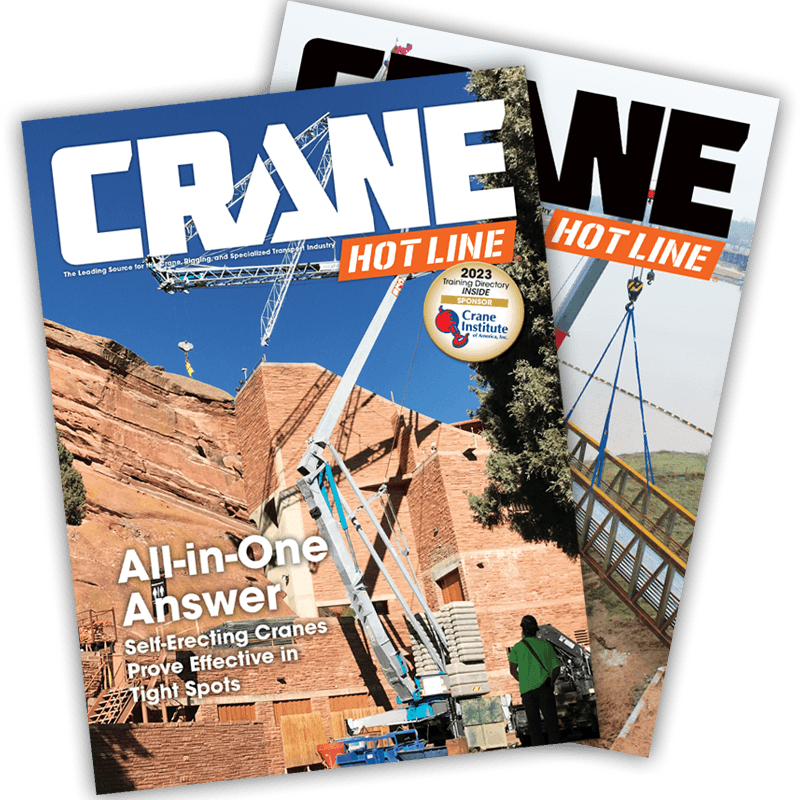Mainstream Appearance, Unique Features
 |
| Enlarge Image Nomenclature for the 10056: 10,000 pounds maximum capacity; 56-foot maximum lift height. |
Editor's Note: In anticipation of the upcoming 2007 Telehandler Showcase, Lift and Access 360 will be recapping articles on machines that were featured in the 2006 Telehandler Showcase. These articles were originally published in the February 2007 edition of Lift and Access.
October 24, 2007 • The name Pettibone is synonymous with telehandlers, and the 125-year-old Baraga, Mich.-based company has a heritage with this product category that reaches back nearly four decades. The 10056 is part of the company's Extendo product line, and although mainstream in appearance, it incorporates several unique features.

Enlarge Image
Telescoping boom sections ride on steel rollers.
Power comes from a Tier 3-compliant Cummins turbo-diesel electronically controlled engine, which belts out a peak 110 turbocharged horses. The engine is mid-mounted at an in-frame location.
It is apparent that Pettibone has made serious efforts to provide maximum service access while minimizing preventive maintenance needs. One way is to minimize oil contamination with the utilization of a Parker dirt box, or a tank within a tank. All oil added to the system goes into the primary tank, where it is then filtered through a 10-micron pre-filter when entering the secondary tank. Removing the tank's filler cap requires a large wrench, which all but eliminates the chance of accidental fuel contamination.
The 100056's fuel and oil tanks are split on either side of the frame. Fuel is stored in a tank that hugs the back of the cab, while the hydraulic tank is located on the opposite side of the frame. Pettibone made the hydraulic tank as narrow as possible to allow better access to the engine.
Power is transferred through a Carraro-supplied TLB2 four-speed (forward and reverse) power shift transmission. The transmission is fully modulated, which allows the telehandler to decelerate to a safe rpm before down-shifting. Carraro also supplies the entire driveline, which incorporates the new Precision Steer axle system. Developed to correct the Ackermann steering geometry, Precision Steer is the first axle designed for four-wheel drive • four wheel steering applications. Prior to using this axle, Pettibone's telehandler tires were toed in 9° in four-wheel steering; with this axle, misalignment has been reduced to only 4°.
The 10056's unique hydraulic system consists of a Parker-supplied pressure-compensating, variable-displacement piston pump. Pettibone asserts that this design offers a quicker response to controller input. The key to this system is that it runs at a constant 2,850 psi, producing zero hydraulic flow until it is asked to supply it. Once requested, the flow peaks at a maximum 38 gpm.
For priority steering and braking, a Sun Hydraulics-supplied sequencing valve diverts all flow for braking and steering, should the system's pressure drop below 2,600 psi. Proportionality for the main and auxiliary boom functions come from a combination of pilot-operated hydraulic and fully proportional electro/hydraulic valves. Where appropriate, sealed pivots, pins, and bushing are used on the 10056 to minimize wear and increase service life.
 |
| Enlarge Image Proper placement of key controls and dual armrests allow for comfortable command. |
Visibility from the full-suspension, adjustable operator's seat is quite good, and proper placement of key controls and dual armrests allow for comfortable command. Straight-forward analog gauges are protected by a Plexiglas shield, and a handy, easy-to-follow flip load chart is located atop the dash.
Main boom functions are controlled through a single dual-axis joystick with an integral Hall-effect thumb rocker switch for secondary or auxiliary functions. The setup allows for true variable flow for three functions simultaneously.


